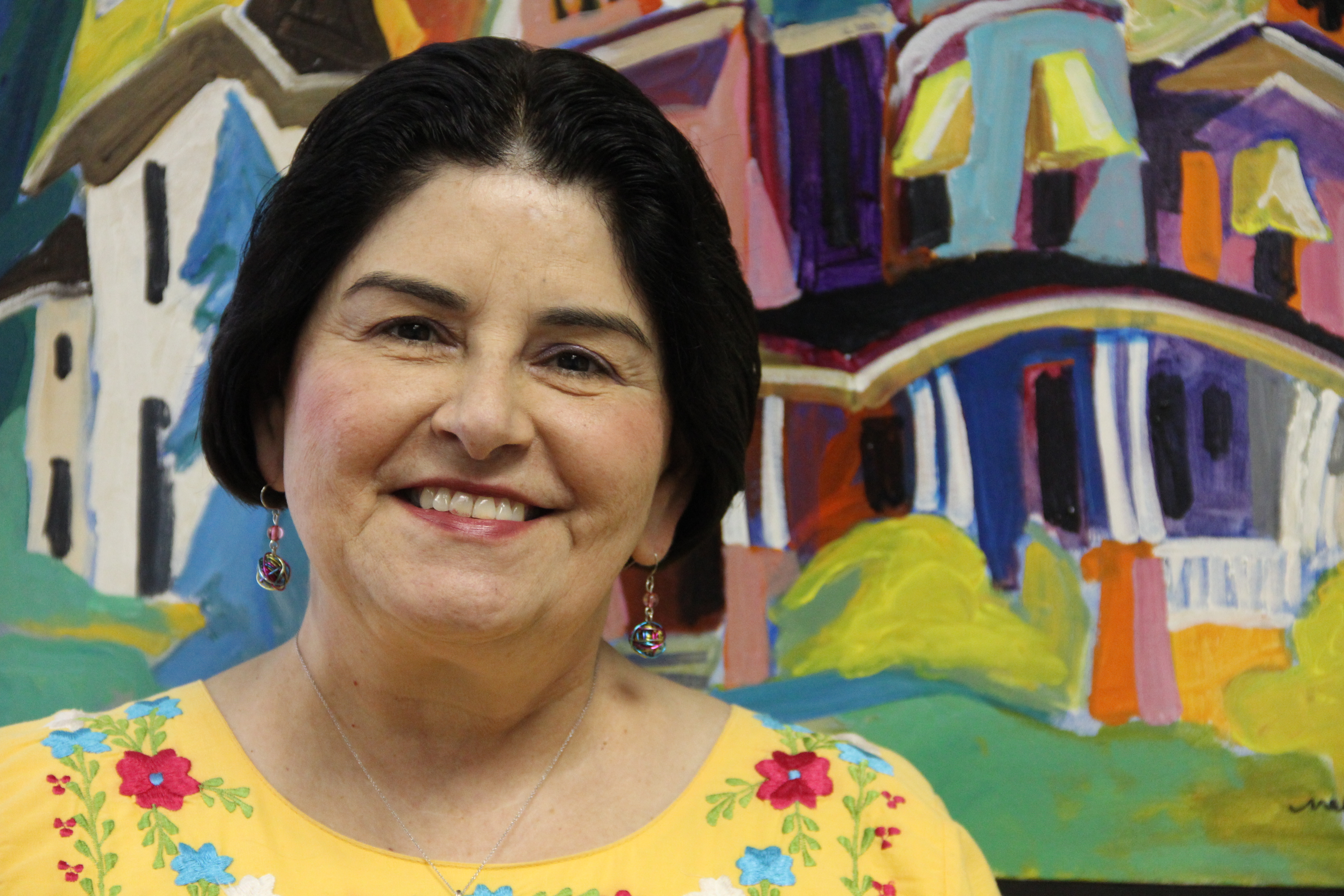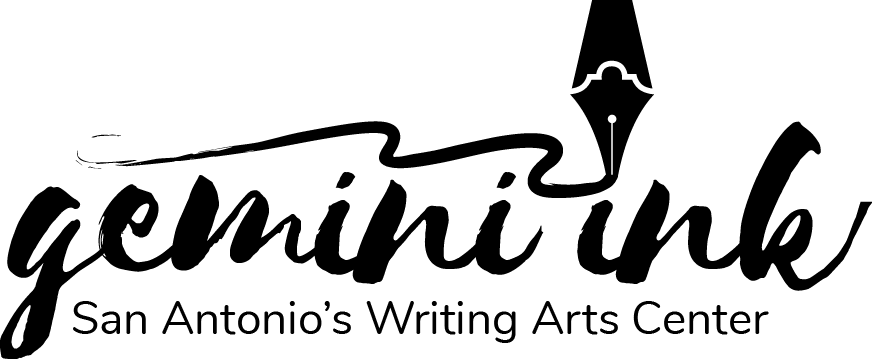The Writer’s Desk features the desks and writing practices of Gemini Ink faculty, visiting authors, teaching artists, volunteers, students, interns, staff, partners and more. Receive new posts in your inbox by subscribing to our newsletter at bit.ly/geminiinknewsletter.
Describe your first writing desk. How is it different (or not) from your current writing desk?
My first writing desk was our home kitchen table. I have been writing since childhood, and my strongest image is the Formica kitchen table in my parents’ house. That table represents all that I value about family, stories, and my own imagination. When I started writing seriously as an author, several years married and a new mom, I wrote at my own family table. I “stole” time when the kids napped. I would sit at the table and write in my notebook, trying to quickly capture the latest inspiration before I was needed elsewhere. I did have a different desk with a computer, but that room had no walls, so I “stole” time during Saturday morning cartoons to type my notes and build my first novel.
Has your preferred place to write changed over the years?
Over the years, I am still in the habit to “steal” time to write. I always wrote with my college students, using a composition notebook to outline stories, jot down poems, or reconfigure a plot for my current novel. Now I work in my son’s old bedroom, at a desk I inherited from his college apartment, and that is where my computer sits. However, the desire to write in notebooks is still my strongest habit. I have been known to write on receipts, paper napkins, on cardboard boxes and other “found” paper if inspiration strikes in places where my notebook isn’t handy.
What is your secret talent? Does it ever pop up in your writing?
My secret talent is spontaneous delivery. I can take an object into my hand and start coming up with a story quickly. Characters appear, a plot evolves, and the setting materializes. It may not be an immediate “hit,” but I have learned to trust revision. I also recognize quickly that I may not have the credibility, background knowledge or personal interest to pursue the idea and move on. This talent shapes every story or poem I have published as well as the thousands of ideas that never came out of the notebooks.
What is the one piece of writing advice that you value most?
No writing is ever “finished.” It is merely “abandoned” to publication whether that publication is an assignment given to the teacher or a published book on a shelf.
Every time I reread what I published, I want to revise a word or sentence again, but I must abandon it, and take my desire to improve into the next picture book, novel or poem.
What theme or symbol often emerges in your work? Why are you drawn to this theme/symbol?
I believe theme or symbol is imposed by the reader, not the writer. I have listened to teachers, parents, librarians, and scholars discuss my work and they are the ones who point out the idea of “familia” as a central theme in my books. I value what a family unit brings to my characters’ lives and in the interaction of my characters, the theme appears to my readers. However, I do carefully plan that regardless of the situation, there is always hope in my characters’ outlook, and if despair sets in, an event provides the strength and resilience necessary to reset the viewpoint character’s perspective.
Do you like things to be carefully planned out or do you prefer to just go with the flow? Does this also apply to how you lay out a story?
Genre influences “planning” and writing practice delivers “flow.” For example, when I compose a story for a picture book, I must plan with word count to shape the story. A contemporary romance needs specific structure. However, when I write in my notebook, I do not think about genre. I allow inspiration to flow freely, welcoming ideas as they arrive as words, characters, or images. I have written a novel from an outline, and I have written a novel with only a first sentence to get me started. My current project is scraps of notebook pages, memories of past events incubating in my head. I daydream about characters’ names. I still need to layer the historical setting upon the novel, so right now I feel open to whatever this project needs: an outline or a leap of faith.
Does good writing result from best practices, magic, or a bit of both?
I have never had the luxury of a set schedule or routine. I wedge my writing in between family commitments, teaching college classes, and author events. However, I do believe in the power of “incubation,” the ability to grow and nurture an idea in my head until I can sit with a notebook or at my computer. Once I am physically writing, connections between dialogue and action, character qualities and motives, setting and pacing, flow from my head through my fingers in ways I never planned. I sit back in the chair, rereading what I wrote, and wonder, “How did that just happen?” Magic? Yes!

Diane Gonzales Bertrand currently sifts through family anecdotes, history websites, and books about San Antonio to begin work on a new novel. She recently retired as an English professor and Writer-In-Residence at St. Mary’s University. Bertrand published the award-winning novel, Trino’s Choice, its sequel, Trino’s Time, and The F Factor; a short fiction collection, There’s a Name for this Feeling, and a dozen picture books. Bertrand is a lifelong resident of San Antonio.



